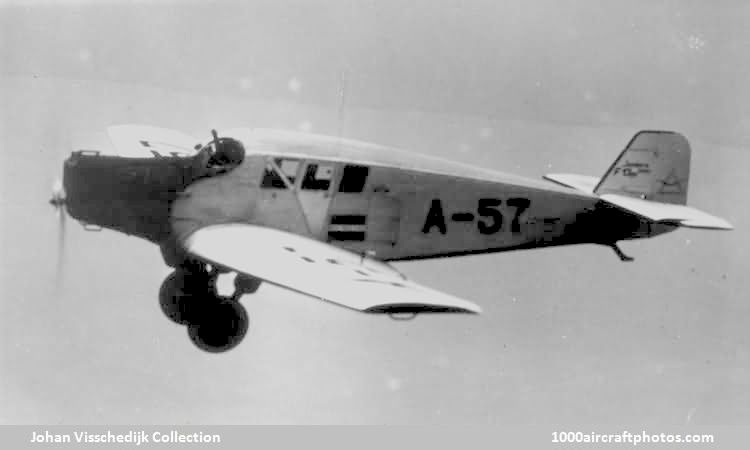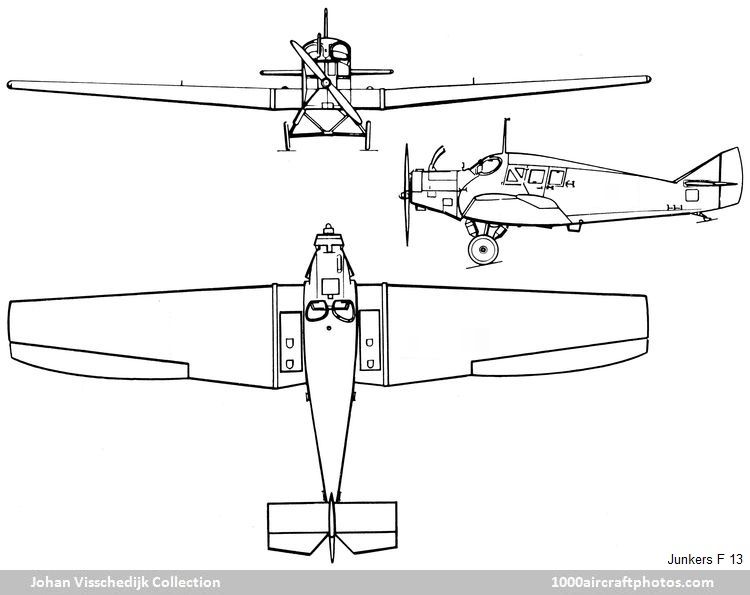The Junkers F 13 was designed from the beginning with two goals: to be the first all-metal airliner and the first series-produced airliner. The design, with the engineering designation J 13, was made under the leadership of chief engineer Dipl.-Ing. Otto Reuter at the Junkers-Flugzeugwerk A.-G. in Dessau. Construction started on February 10, 1919 and on July 25 the F 13 (D-1) was flown for the first time with test pilot Monz at the controls.
Within two months after the maiden flight the F 13, powered by an 185 hp BMW III a engine, established a world record by lifting 8 people (1,153 lb, 523 kg) in 86 minutes to a height of 22,146 ft (6,750 m) on September 13, 1919. Due to this world record the F 13 became known all over the world in no time and request came in from many companies and governments.
After initial production there was a ban on all aircraft manufacturing in Germany, implemented by the Allied powers from WW I from 1921 to the middle of 1922. To earn money Junkers started his own airline Junkers Luftverkehr AG in 1921, using mostly F 13s; the company became part of Luft Hansa in 1926. In the end the F 13 was sold to over 35 countries, flew in all continents and was used operationally till 1943. The F 13 opened many routes, was used in exploration missions, and established several records in distance, height and duration.
The small single-engined monoplane was a complete new design featuring development of the metal-use on earlier planes produced by Junkers during WW I. The cantilever unbraced low-wing had an immensely strong structure of duralumin spars and corrugated dural skin. The two pilots were seated in an open cockpit with the four passengers in an enclosed cabin, in later version the cockpit was also enclosed.
Initially flown with the 160 hp Mercedes D IIIa engine, a number of other engines were used, with the 310 hp Junkers L 5 powering most of the 322 aircraft built. Of these, five were built in the Junkers factory in Moscow-Fili, known as Ju 13, they served with the Russian and Persian forces armed with a machine gun for self-defense; and two were built in Venice by Transadriatica.
There were 8 basic models, with sub-versions there were 23 models and almost all of these, alternatively to the L (landplane) version, could be fitted with either floats on the W-version (seaplane) or skies on the S-version (snow plane). Next to the range of engines there were: straight or swept wings; triangle, rounded and square fins with different areas; differences in the wing length or area; and more.
|
F 13: |
prototype, 160 hp Mercedes D III a |
The following data refer to the F 13 de:
|
Type: |
Six-seat transport |

